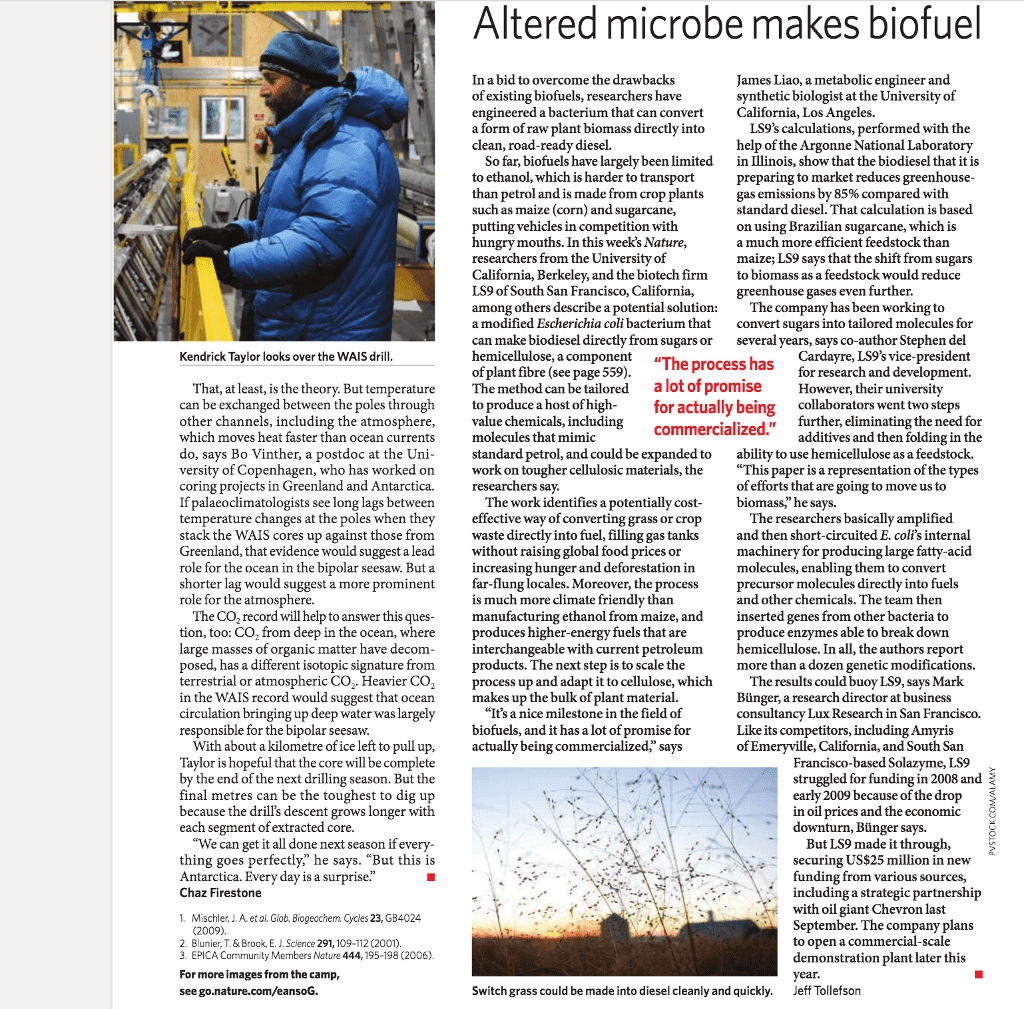what is the article audiences?
provide sufficient and detail examples from the articles??
three articles features and explain?
please answer is thanks.
Kendrick Taylor looks over the WAIS drill That, at least, is the theory. But temperature can be exchanged between the poles through other channels, including the atmosphere, which moves heat faster than ocean currents do, says Bo Vinther, a postdoc at the Un versity of Copenhagen, who has worked on coring projects in Greenland and Antarctica. Ifpalaeoclimatologists see long lags between temperature changes at the poles when they stack the WAIS cores up against those from Greenland, that evidence would suggest a lead role for the ocean in the bipolar seesaw. But a shorter lag would suggest a more prominent role for theatmosphere. The CO2 record will help to answer this ques tion, too: CO2 from deep in the ocean, where arge masses of organic matter have decom. posed, has a different isotopic signature from terrestrial or atmospheric CO2. Heavier CO n the WAIS record would suggest that ocean. irculation bringing up deep water was largely responsible for the bipolar seesaw. With about a kilometre of ice left to pull up, Taylor is hopeful that the core will be complete by the end of the next drilling season. But the final metres can be the toughest to dig up because the drill's descent grows longer with each segment ofextracted core. "We can get it all done next season ifevery thing goes perfectly," he says. "But this is Antarctica. Every day is a surprise Chaz Firestone Mischler, J. A etai. Glob, Biogeochem, Cycles 23, GB4024 2009 22. Bluni & Brook, E. Science 291, 09-112 (2001 3. EPICA Community Members Nature 444,195-198 (2006) For more images from the camp, VeansoG. see go nature.com Altered microbe makes biofuel In a bid to overcome the drawbacks ames Liao, a metabolic engineer and of existing biofuels, researchers have synthetic biologist at the University of engineered a bacterium that can convert California, Los Angeles a form of raw plant biomass directly into LS9's calculations, performed with the clean, road-ready diesel. help of the Argonne National Laboratory So far, biofuels have largely been limited in Illinois, show that the biodiesel that it is to ethanol, which is harder to transport preparing to market reduces greenhouse than petrol and is made from crop plants gas emissions by 85% compared with such as maize (corn) and sugarcane, standard diesel. That calculation is based putting vehicles in competition with on using Brazilian sugarcane, which is hungry mouths. In this week's Nature a much more efficient feedstock than researchers from the University of maize LS9 says that the shift from sugars California, Berkeley, and the biotech firm to biomass as a feedstock would reduce LS9 of South San Francisco, California, greenhouse gases even further. among others describe apotential solution The company has been working to modified Escherichia coli bacterium that convert sugars into tailored molecules for can make biodiesel directly from sugar several years, says co-author Stephen del omponent The process has Cardayre, LS9's vice-president for research and development. hemicellulose, of plant fibre (see page 559 a lot of promise The method can be tailored However, their university to produce ahost of high for actually being collaborators went two steps value chemicals, including further, eliminating the need for commercialized molecules that mimic additives and then folding in the standard petrol, and could be expanded to ability to use hemicellulose asafeedstock. work on tougher cellulosicmaterials, the This a representation of the type researchers say. of efforts that are going to move us to The work identifies a potentially cost biomass," he says. effective way of converting grass orcrop The researchers basically amplified waste directly into fuel, filling gas tanks and then short-circuited E coli's internal without raising global food prices or machinery for producing large fatty-acid increasing hunger and deforestation i molecules, enabling them to convert far-flung locales. Moreover, the process precursor molecules directly into fuels is much more climate friendly than and other chemicals. The team then facturing ethanol from maize, and inserted genes from other bacteria to manu produces higher-energy fuels that are produce enzymes able to break down interchangeable with current petroleum hemicellulose. In all, the authors report products. The next step is to scale the more than a dozen genetic modifications process up and adapt it to cellulose, which The results could buoy LS9, says Mark makes up the bulk of plant material Bunger, a research director at business "It's a nice milestone in the field of consultancy Lux Research in San Francisco. biofuels, and it has a lot of promise for Like its competitors, including Amyris actually being commer rcialized," says of Emeryville, California, and South San Francisco-based S LS9 struggled for funding in 2008 and early 2009 because of the drop in oil prices and the economic downturn, Bunger says. But LS9 made it through, securing US$25 million in new funding from various sources, including a strategic partnership with oil giant Chevron last September. The company plans to open a commercial-scale demonstration plant later this year. eff Tollefso Switchgrass could be made into diesel cleanly and quickly.


